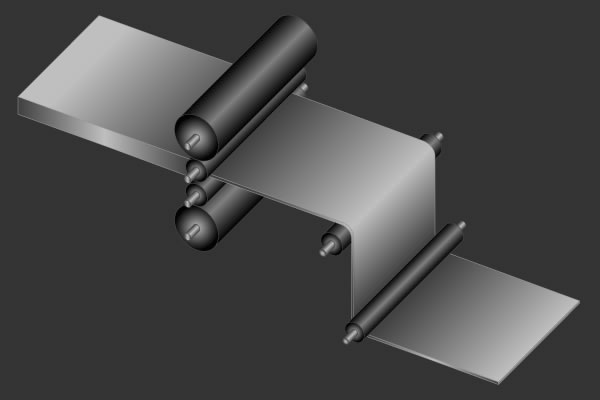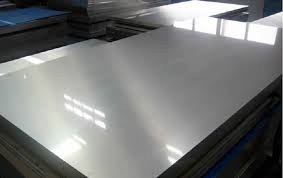Is Stainless Steel Magnetic or Non-magnetic in external field
We have received questions on our website whether stainless steel is magnetic or not, whether it is attracted by a magnet or not, what are the magnetic properties of stainless steel, how are stainless steel properties transformed to magnetic properties, what is paramagnetism etc. So instead of answering the questions of our readers one by one, we have decided to compile a comprehensive article on this subject of stainless steel and magnetism.
What is the term magnetic?
Magnetic is an adjective of the term magnet. The magnet is a material which has an arrangement of atoms that allows it to show properties of magnetism. The properties of magnetism include attracting iron or getting attracted or repelled by a magnetic field. In other words, we can say an object or item which shows the ability to orient itself in an external electromagnetic field is said to be as magnetic.

How come stainless steel be magnetic?
A brief context of stainless steel
Stainless steel is an extremely wide group of material. On Material Grades website, you can find details about several material grades of stainless steel. Each differs from other material. The name “stainless steel” was coined as a general term for alloys of iron with a minimum specified chromium content. The chromium gives this type of steel its ‘stainless’ character that stands for corrosion resistance. Stainless steel is better from plated steel because when the plated steel is scratched off it is susceptible to rust due to iron oxidation whereas stainless steel can form the layer of chromium oxide even if scratched and thus the material is protected.
Read more about Stainless Steel; An Anti-Rust & Anti-Corrosion Material
Along with chromium, other different elements are added to the alloy to formulate specific properties, for example, strength and ductility. Especially, nickel is utilized to enrich the chromium oxide layer for corrosion resistance.
The Question!
Whether stainless steel is attracted or not by a magnetic field. The straight answer is: some material grades of stainless steel are attracted by the magnetic field and so are called magnetic while others are not and called as nonmagnetic stainless steel.
Some of the examples of magnetic stainless steel are:
- 440C Martensitic Stainless Steels in ASTM F899 Standard
- UNS S42000 Stainless Steel Martensitic Grades
- ASTM F899 410 Martensitic Wrought Stainless Steels
- 430 Stainless Steels Ferritic in ASTM F899 Standard
Some of the examples of non-magnetic stainless steel are:
- 1.4404 Material; Low Carbon Austenite Stainless Steel
- 316L Stainless Steel; Low Carbon Austenite Material
- AISI 304 Stainless Steels Type Technical Specifications
- JIS G4303 SUS304 Austenite Stainless Steel Grade
The Science that defines the magnetic and nonmagnetic properties of stainless steel
Magnetic Stainless Steel: There are multiple groups of materials within stainless steel with different mechanical properties. The fundamental type of stainless steel has a ‘ferritic’ microstructure and is normally magnetic. As you can see from the example, 430 stainless steel is magnetic. Ferritic stainless steel is manufactured from the addition of chromium and it is magnetic. If it is added with carbon the “ferritic” structure becomes “martensite”. Martensite stainless steel is also magnetic in nature. As in the example, 410, 440C, S42000 grades are martensites and are all magnetic.
Nonmagnetic Stainless Steel: Another most important stainless steels are having ‘austenite’ structure. Austenite stainless steel has a greater chromium content with the addition of nickel. It alters the microstructure and makes this type as non-magnetic as in the example we have 316L, 304, SUS304, 1.4404 are all austenite grades and are all non-magnetic.
We summarize, the whole discussion of magnetic and non-magnetic stainless steel as under:
- Ferrite structure – Magentic
- Martensite structure – Magnetic
- Austenite structure – Non-magnetic
What is Paramagnetism?
Can nonmagnetic stainless steel be transformed to show magnetic properties?
Austenite stainless steel is non-magnetic. However, any process that alters the microstructure can transform the austenite into ferrite or ferromagnetic. Such processes can include welding or cold rolling etc. Austenite stainless steel can also turn to martensite at very low temperatures. Small Particles of austenite stainless steel can be paramagnetic in a strong magnetic field.
Purchase stainless steel online.








I’m planning on getting some stainless steel balustrades to serve as a divider that separates my kitchen from my dining room. It’s great to know that austenite steel is a non-magnetic variant. I wouldn’t want my kids playing around with the fridge magnets and putting them in all sorts of places.
Is stainless steel appropriate for boiler compare to A516 gr70?